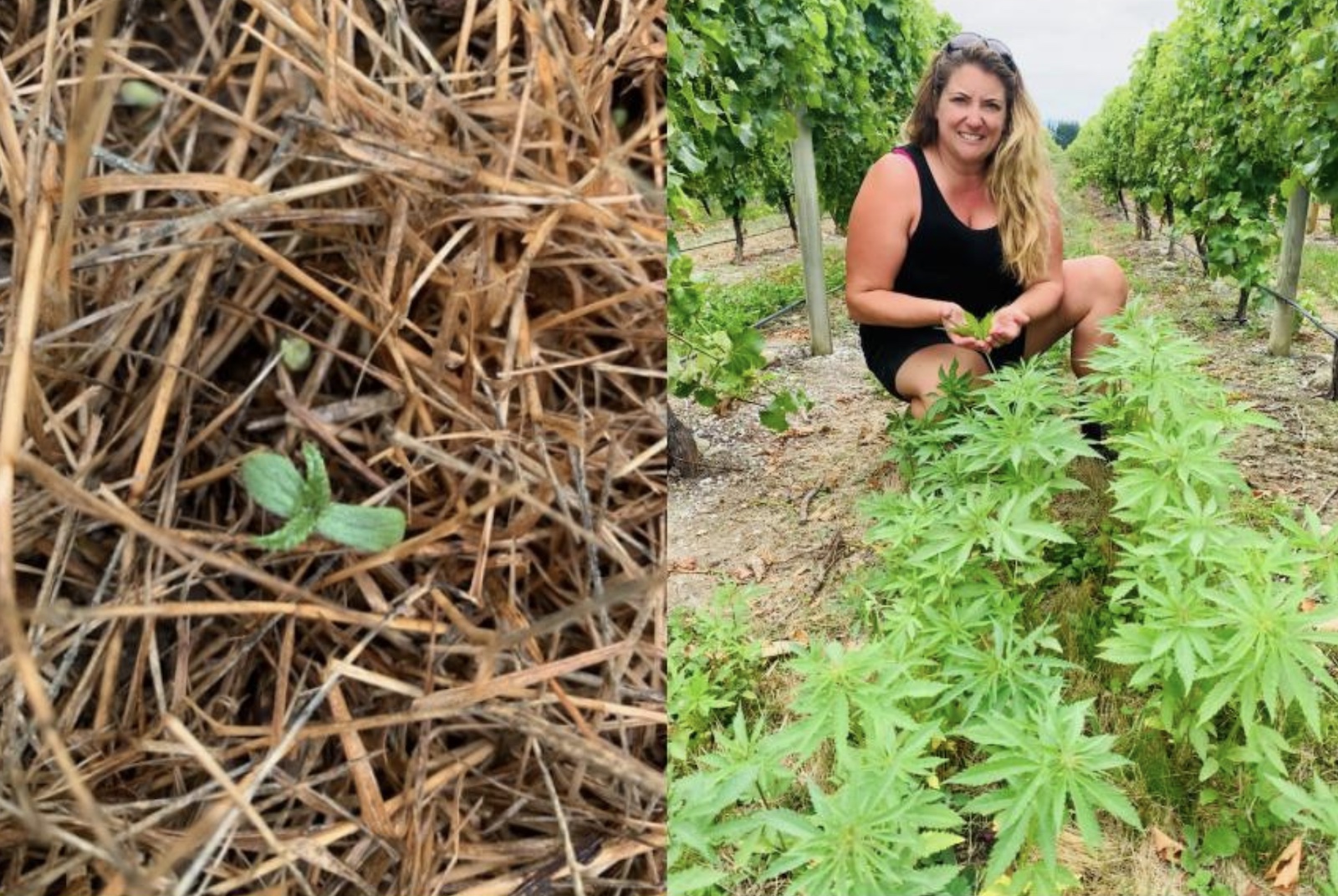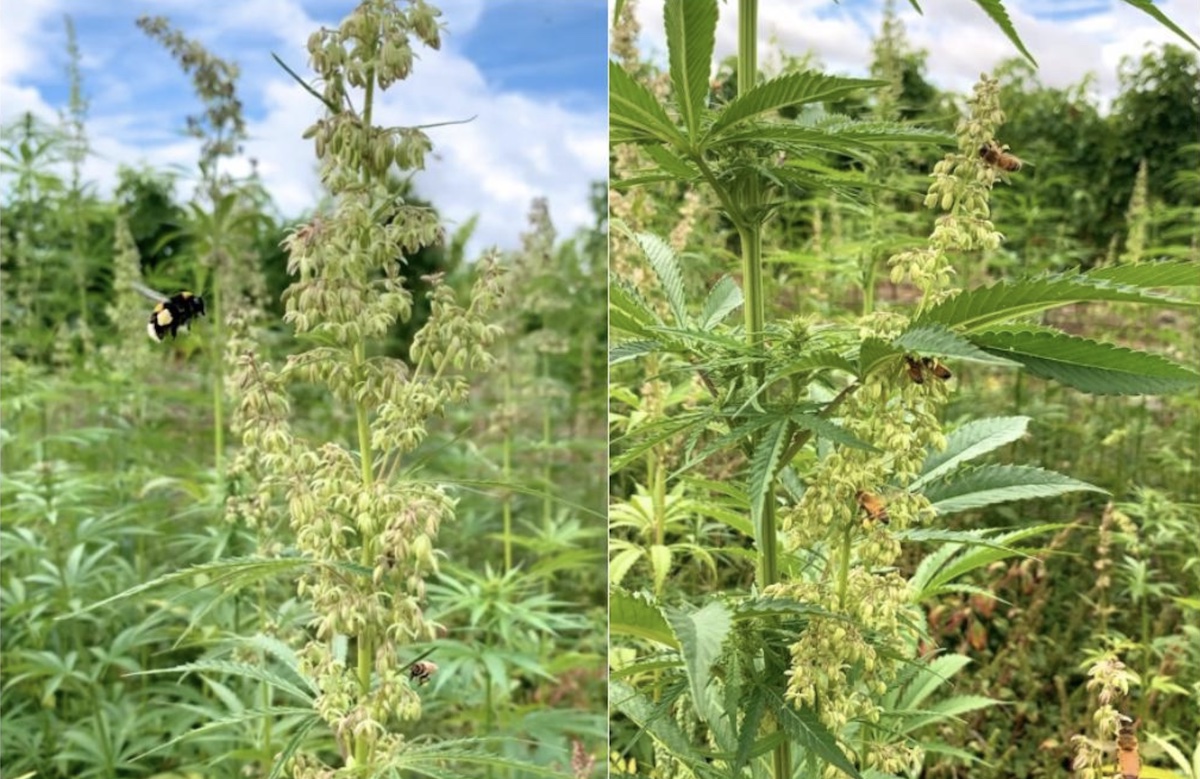- Cover crops have become an increasingly popular practice in viticulture as they can offer great benefits to vineyard owners.
- By planting cover crops between the vine rows, producers can improve the health of the soil, reduce erosion, and increase biodiversity in their vineyards.
- The wine and cannabis industries could collide in the near future as a new study has revealed how hemp can be highly beneficial as a cover crop in vineyards.

When we think of Mediterranean landscapes, the first thing that probably springs to mind are vineyards and olive groves. And, without even realising it, we imagine the fields in this mental image to be completely ploughed, with their soil free of any adventitious vegetation or any plants that grow spontaneously. This has certainly been the appearance of these crops for centuries, with producers trying to keep weed growth to a minimum.
However, this is slowly changing due to a shift in the agro-ecological vision of producers, along with the partial migration of vineyards to more fertile and irrigable areas. All of this is making cover crops an increasingly popular choice for soil management in the Mediterranean.
According to a 3-year study conducted by New Zealand researchers and presented in 'New Zealand Wine Grower', it seems that planting hemp as a cover crop in vineyards could be highly beneficial. For US regions like California, or for Mediterranean countries like France, Spain, or Italy, which have booming wine and hemp markets, these findings could prove especially useful for the future of both industries.
Assessment of the impact of hemp on vineyards
The study crop, using Marlborough Sauvignon Blanc vineyards, was located in the South Island of New Zealand. Hemp was established in the soil without supplementary nutrition or irrigation, even during a period of drought. The main objective was to test a cover crop which could potentially provide a second income without compromising on the performance of the vines. The results were quite surprising, especially because substantial benefits were obtained for both the vineyard and the environment.
To measure the impact of the use of cannabis as a cover and companion crop in vineyards, researchers planted industrial hemp seeds of the Kompolti variety in the central rows of the vineyard. This strain originates from Hungary and is well known for its great hardiness and adaptability, especially in continental and Mediterranean climates. It has also become extremely popular due to its excellent quality and yielding capacity. Kompolti was originally grown to produce fibre and seeds, but its cultivation in recent years has been more oriented towards the production of biomass and CBD-rich flowers, given that it exhibits high cannabidiol levels (between 2 and 3%) and really low THC levels (below 0.2%).

The hemp plants used for the study showcased an exceptional level of adaptability and thrived without any additional watering. Surprisingly, rather than adversely affecting wine production, their presence actually improved the quality of the grapes when compared to grapes grown without hemp intercropping.
Researchers observed that the hemp plants developed robust root systems that extended to a depth of at least 30 cm, and showed an ability to thrive within the compacted tracks of the tractor wheels in the rows. This root system effectively mitigated the compaction resulting from vineyard maintenance operations.
What's more, during the 2019 harvest, the juice and must samples from the area planted with hemp showed a greater diversity of various yeast species than the control group, which facilitated a healthy fermentation process without inoculation. The quality of the wine from the grapes grown with hemp exceeded that of the control group, resulting in a significantly better wine.
A turning point in the evolution of the wine industry?
Researchers highlighted the potential of hemp to provide additional benefits to both the soil and the wine, and described this discovery as "truly exciting". They also explained that the variations in native yeast populations introduced by the presence of a hemp cover crop have attracted considerable interest: if hemp can improve the quality of wine, it could be an intriguing avenue for future research.
Despite the considerable size of some of the hemp plants, the researchers were surprised at the lack of competition between the two crops. Although the study did not specifically investigate this aspect, it points to the potential benefits of integrating hemp with other cover crops, such as clover for the production of nitrogen, and buckwheat to promote the appearance of beneficial insects in the vineyards.
The hemp plants that were successfully established flourished even during an exceptionally arid season, without requiring additional irrigation (unlike other cover crops with shallower roots). This unique feature enables hemp to persist and continue capturing carbon when other cover crops normally decline.
In addition, the presence of hemp had no discernible adverse effects on vine growth, nutrient levels, water relations, fruit development, or vine quality and productivity. Soils within the hemp-covered area exhibited higher levels of organic matter and total carbon, which bodes well for the long-term health and fertility of the soil. These differences were more pronounced at depths of 40 to 80 cm, which suggests that hemp facilitates deeper carbon absorption within the soil profile in comparison to other cover crops.
Benefits for the vineyard, the grower, and the environment
According to researchers, this innovative approach to planting hemp alongside vines can produce higher-quality grapes with lower resource costs. Its main benefits can be defined in terms of carbon absorption, water savings, and the added advantage of relieving soil compaction caused by tractor wheel tracks, which is a subject of great concern for the soils of vineyards. In addition, this approach also promotes bee-friendly ecosystems, which is a crucial issue.

Years ago, it was believed that bees weren't attracted to cannabis plants because of their lack of brightly coloured flowers and nectar for them to collect. However, recent research by both Cornell University and the University of Colorado shows that bees are actually specifically attracted to male cannabis plants due to their high pollen count. In fact, these studies found that the greater the height of the plants, the greater the proportion of visits they receive from bees. Industrial hemp grows very high, and could therefore be highly beneficial for a population of bees in distress, since its late flowering season makes it an ideal food source in areas where other sources might be scarce.
The discussion of the study anticipates that a growing number of grape producers will explore the integration of hemp, either as a companion plant or as part of a more diversified cover crop mix, due to its promising potential, particularly in terms of soil improvement, possible improvement of wine quality, and the prospect of generating additional income for the property (from the production of CBD, for example). In addition, these interesting findings are the gateway to further research and experimentation, offering exciting prospects for the future of vineyard management and the improvement of the overall quality of wine.



Comments from our readers
There are no comments yet. Would you like to be the first?
Leave a comment!Did you like this post?
Your opinion about our seeds is very important to us and can help other users a lot (your email address won't be made public).